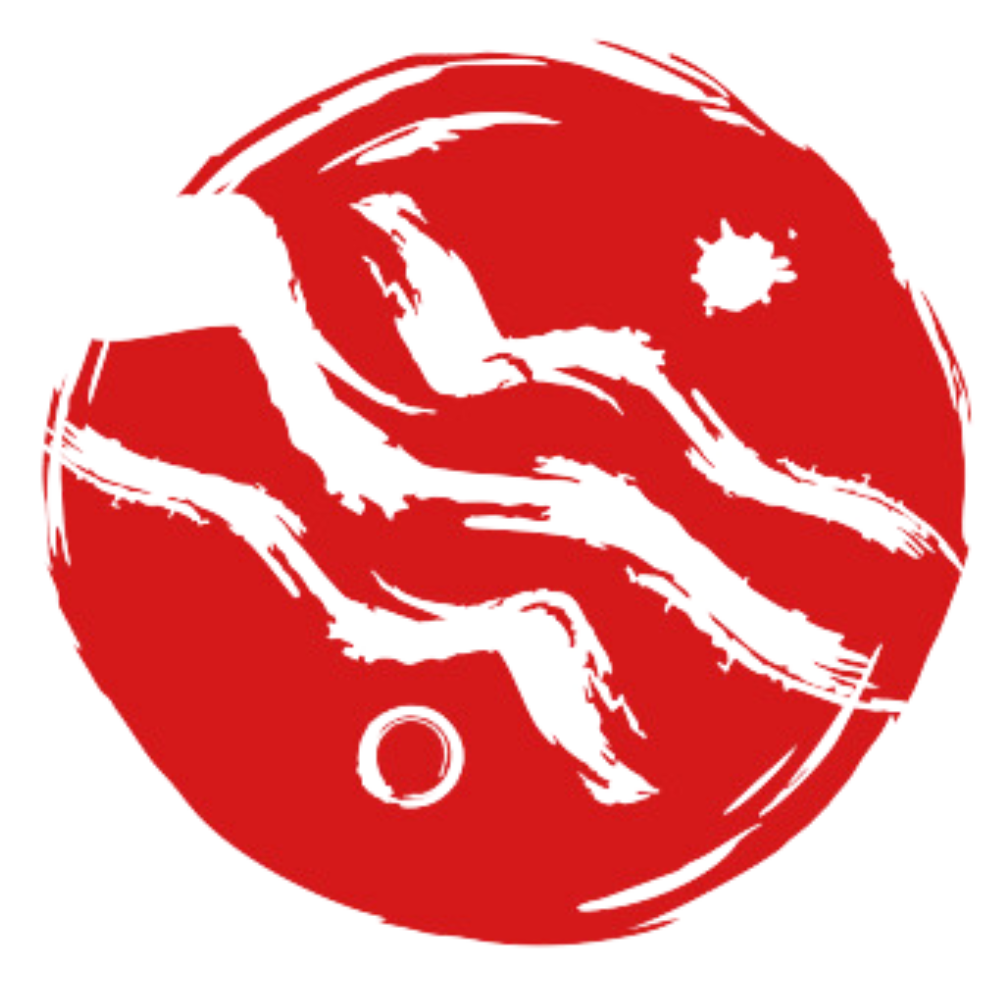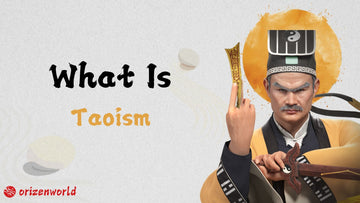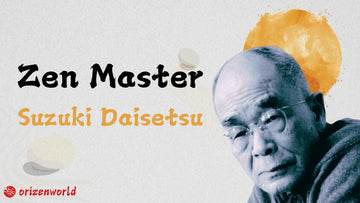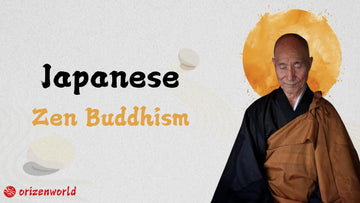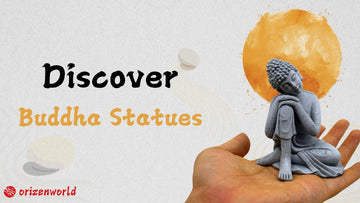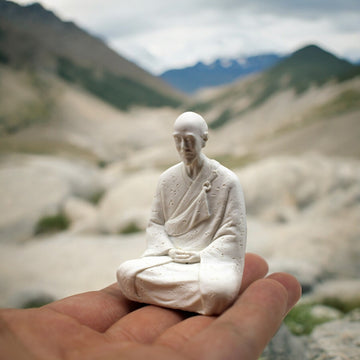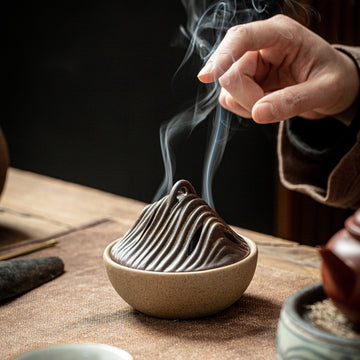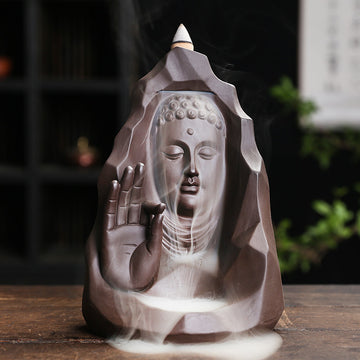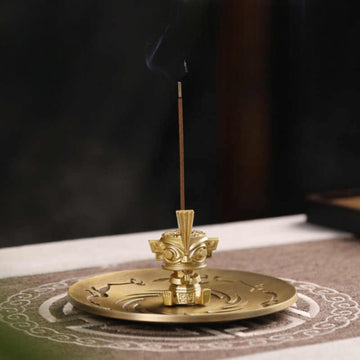Taoism is a prominent religion in China and a vital part of Chinese culture, contributing to many cultural treasures like feng shui, tai chi, and the concepts of yin and yang. Because of its cultural significance, Taoism is widely studied by scholars. If you're unfamiliar with Chinese or East Asian culture, Taoism might seem like a mystery to you—perhaps even a bit dull.
But what if I told you that Taoism isn't just about meditation and worship? It also includes fascinating practices like kung fu, and even stories about subduing demons and monsters. Intrigued?
In this article, I’ll introduce you to Taoism, explain its core principles, and share its fascinating features. Ready? Let’s div
Taoism originated in ancient China, with its roots tracing back to the early Zhou Dynasty (1046–256 BCE). The founder of Taoism is traditionally attributed to Laozi, an enigmatic figure who is said to have authored the Tao Te Ching, one of the foundational texts of Taoism.
Although Laozi's historical existence is debated, his teachings about the Tao (the Way) and the concept of Wu Wei (non-action) formed the bedrock of Taoist philosophy. The Tao Te Ching became the cornerstone of Taoism, influencing not only religious practices but also shaping Chinese thought for centuries.

Laozi, an ancient Chinese philosopher, is traditionally considered the founder of Taoism. He is best known for authoring the Tao Te Ching, a key text that outlines Taoist philosophy and principles.
Over time, Taoism evolved, incorporating elements from indigenous Chinese beliefs, such as ancestor worship and shamanism. During the Han Dynasty (206 BCE–220 CE), Taoism began to develop into a distinct religious system, marked by rituals, alchemy, and a focus on immortality.
It gained significant influence during the Tang Dynasty (618–907 CE), where Taoist priests played key roles in both court and village life, and Taoist temples flourished.
Throughout Chinese history, Taoism has been intertwined with Confucianism and Buddhism, influencing Chinese culture, art, medicine, and political thought. Its adaptability allowed it to survive and thrive across various historical periods, shaping the spiritual and cultural landscape of East Asia.
Taoist philosophy, primarily represented by the thoughts of Laozi and Zhuangzi, is built around the concept of "Tao" (the Way). Laozi’s key contribution was introducing the idea of Tao as the central tenet of thought, marking a significant transformation during the Spring and Autumn Period.
Laozi’s concept of Tao replaced traditional views like the "Mandate of Heaven" or "Deity worship." But what exactly is the Tao? It refers to the natural order of the universe, the fundamental principle that governs all things. Laozi advocated for individuals and rulers to align with this natural law, practicing the art of "Wu Wei" (non-action), which emphasizes effortless action in harmony with nature.

"无为" (Wu Wei) is the Taoist concept of "non-action" or "effortless action," where one aligns with the natural flow of the universe, achieving harmony without forceful intervention or resistance.
In political philosophy, Laozi’s doctrine of "Wu Wei" extends to governance. He proposed a minimalist approach to governance, urging rulers to avoid interfering with the lives of their people, allowing society to naturally evolve. The role of the government, according to Laozi, is to facilitate balance and harmony rather than impose control. This philosophy encourages a natural, unforced way of life, where personal and societal balance can be achieved without forceful intervention.
Laozi’s worldview is generally optimistic, as he believed that individuals could get closer to the Tao through effort and practice. This approach is deeply positive, emphasizing personal growth and enlightenment.
Overall, Taoist philosophy is idealistic and profoundly dialectical, advocating for balance and inner truth through aligning with the natural world and its rhythms.
The Tao Te Ching by Laozi is one of the most important foundational texts in Taoism. It consists of 81 short chapters, offering profound insights into the nature of the Tao (the Way) and how one should live in harmony with it.
The Tao Te Ching emphasizes the principles of simplicity, humility, and non-action (Wu Wei), guiding individuals to align with the natural flow of life and avoid unnecessary interference. It has deeply influenced not only Taoism but also Chinese philosophy and culture.
Zhuangzi, another key Taoist philosopher, is credited with the text Zhuangzi, which elaborates on the teachings of Laozi. Zhuangzi’s writing is more playful and metaphorical, often using stories, paradoxes, and humor to explore the nature of existence and the limitations of human knowledge.
His work encourages embracing spontaneity, individuality, and freedom, promoting a worldview that questions conventional values and societal norms.

庄周梦蝶 is a Taoist parable symbolizing the blurred boundaries between reality and illusion. It narrates Zhuangzi dreaming he is a butterfly, awakening to question whether he is Zhuangzi dreaming or a butterfly dreaming of being Zhuangzi.
Together, the Tao Te Ching and Zhuangzi offer a comprehensive understanding of Taoism, combining practical wisdom with a deep philosophical exploration of the universe and human nature.
Taoist practices are deeply rooted in the philosophy of harmony, focusing on balancing the body, mind, and spirit. Meditation is one of the foundational practices in Taoism, used to cultivate inner peace and connect with the Tao.
Taoist meditation often involves techniques like breath control, visualization, and mindfulness to enhance awareness and promote the smooth flow of Qi (vital energy). It encourages practitioners to let go of distractions, align with natural rhythms, and nurture their spiritual health.
Qi Gong, another essential practice, is a system of exercises and breathing techniques designed to cultivate and balance Qi within the body.

Qi Gong is highly popular in modern Chinese society, with people practicing Taoist Qi Gong to relieve stress, improve sub-health conditions, and achieve balance, bringing vitality and wellness to their daily lives.
Rooted in Taoist principles, Qi Gong emphasizes slow, deliberate movements, controlled breathing, and mental focus. It is both a physical and spiritual practice, aiming to enhance energy flow, improve physical health, and deepen the practitioner’s connection with the Tao. Qi Gong is widely appreciated for its therapeutic benefits, including stress reduction and improved vitality.
Tai Chi, a martial art with Taoist origins, integrates meditative movement and energy flow. Its flowing, graceful forms are designed to harmonize Yin and Yang energies, promoting balance and overall well-being. Practicing Tai Chi improves flexibility, coordination, and mental clarity, embodying the Taoist pursuit of unity between body and spirit. Together, these practices form a holistic approach to health and self-discovery.

Tai Chi is a popular morning exercise in China, especially among middle-aged and elderly individuals, promoting physical health, relaxation, and a sense of harmony through its gentle, flowing movements.
Taoism emphasizes the importance of living in harmony with nature, encouraging individuals to connect with the world around them. In modern life, where we often feel disconnected from nature, it is vital to make time for outdoor activities like walking, meditating, or gardening.
By spending time in natural environments, we can absorb the calming energies of the earth, which helps restore balance and inner peace. Taoist wisdom suggests that this connection to nature is crucial for mental clarity and physical well-being.
The Taoist principle of "Wu Wei," which translates to non-action or effortless action, teaches us to let go of rigid control and accept things as they are. In modern life, this can be incredibly beneficial. After putting in our effort, we should not obsess over outcomes.
Instead, we should focus on what we can influence and accept what is beyond our control. This approach helps reduce stress and anxiety, enabling us to live with greater contentment and a clearer mindset.
Taoism also highlights the cultivation of both body and mind. Practices like meditation, yoga, and Qi Gong are central to Taoist philosophy, as they nurture the body and mind. These activities not only improve physical health but also promote mental clarity and emotional balance.
Incorporating Taoist practices into our daily routine can bring balance to our modern, fast-paced lives. By reconnecting with nature, embracing non-action, and prioritizing physical and mental health, we can lead more peaceful and fulfilling lives.
Taoism has had a profound influence on Chinese art and culture, with one of its most significant contributions being Feng Shui. This ancient practice, which originated from Taoist philosophy, focuses on the arrangement of space to promote harmony and balance.
Feng Shui principles are deeply embedded in Chinese architectural design, landscape gardening, and interior decor, influencing how homes, cities, and even graves are arranged to ensure prosperity and well-being.
In modern Chinese films and literature, Taoism also plays a prominent role, particularly in the portrayal of Taoist priests. In many movies and TV dramas, Taoist priests are depicted as powerful figures capable of subduing evil spirits, ghosts, and monsters.
For example, in the popular film Zombie Taoist (僵尸道长), the Taoist priest is shown as an expert in vanquishing zombies, a role reminiscent of the priest or exorcist in Western cultures. This reflects the deep-rooted belief in Taoism’s spiritual power to combat evil forces.

In Chinese culture, Taoist priests play the role of rescuers during times of turmoil and danger. They are skilled in various Taoist arts, talismans, and alchemy, often regarded as mystical figures capable of exorcising evil and resolving crises.
Taoism's integration into both traditional and modern Chinese culture shows its enduring relevance. Its impact continues to shape art, literature, and popular media, creating a unique blend of spiritual beliefs and cultural expressions.
